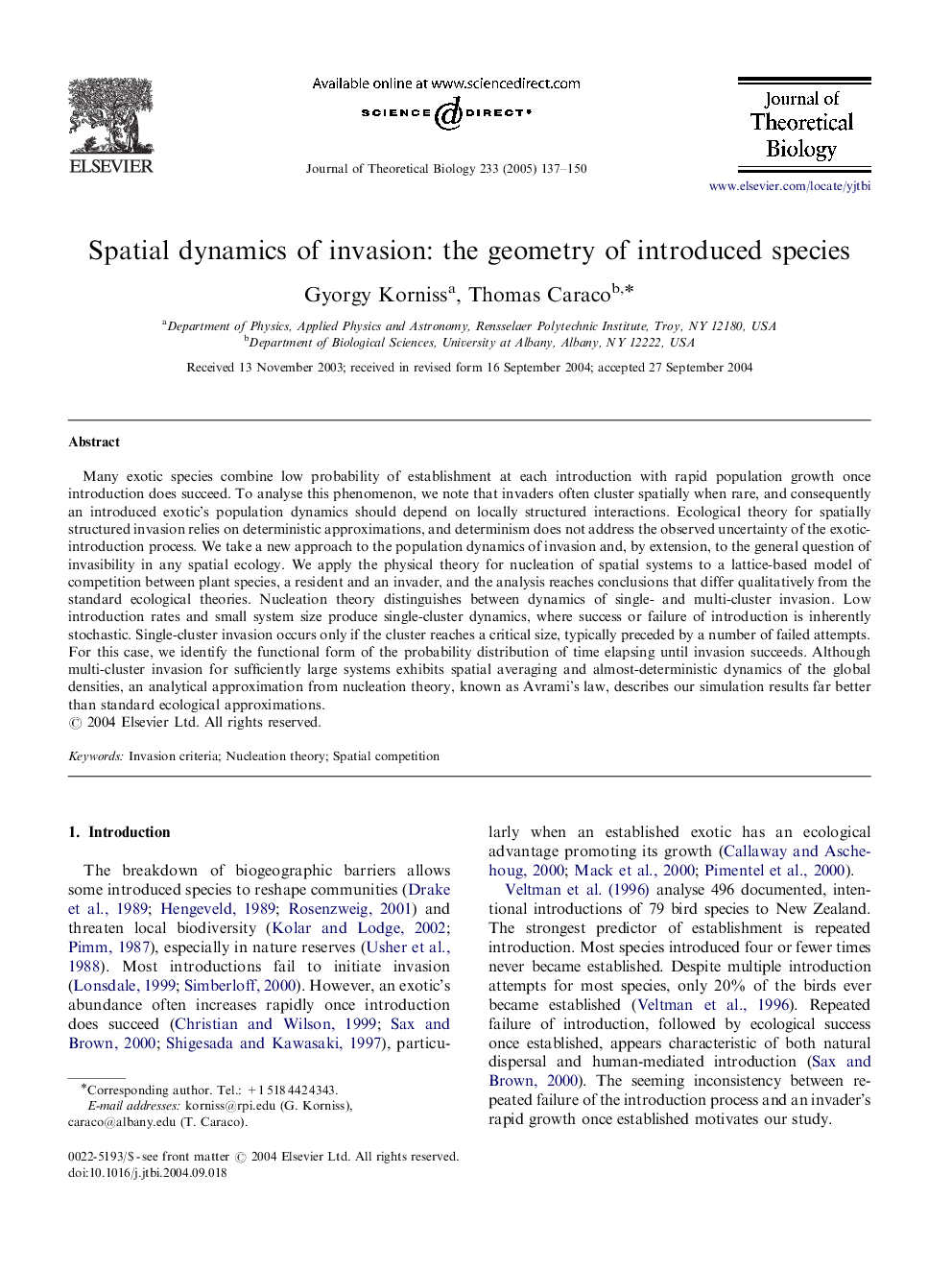| Article ID | Journal | Published Year | Pages | File Type |
|---|---|---|---|---|
| 9469846 | Journal of Theoretical Biology | 2005 | 14 Pages |
Abstract
Many exotic species combine low probability of establishment at each introduction with rapid population growth once introduction does succeed. To analyse this phenomenon, we note that invaders often cluster spatially when rare, and consequently an introduced exotic's population dynamics should depend on locally structured interactions. Ecological theory for spatially structured invasion relies on deterministic approximations, and determinism does not address the observed uncertainty of the exotic-introduction process. We take a new approach to the population dynamics of invasion and, by extension, to the general question of invasibility in any spatial ecology. We apply the physical theory for nucleation of spatial systems to a lattice-based model of competition between plant species, a resident and an invader, and the analysis reaches conclusions that differ qualitatively from the standard ecological theories. Nucleation theory distinguishes between dynamics of single- and multi-cluster invasion. Low introduction rates and small system size produce single-cluster dynamics, where success or failure of introduction is inherently stochastic. Single-cluster invasion occurs only if the cluster reaches a critical size, typically preceded by a number of failed attempts. For this case, we identify the functional form of the probability distribution of time elapsing until invasion succeeds. Although multi-cluster invasion for sufficiently large systems exhibits spatial averaging and almost-deterministic dynamics of the global densities, an analytical approximation from nucleation theory, known as Avrami's law, describes our simulation results far better than standard ecological approximations.
Related Topics
Life Sciences
Agricultural and Biological Sciences
Agricultural and Biological Sciences (General)
Authors
Gyorgy Korniss, Thomas Caraco,
